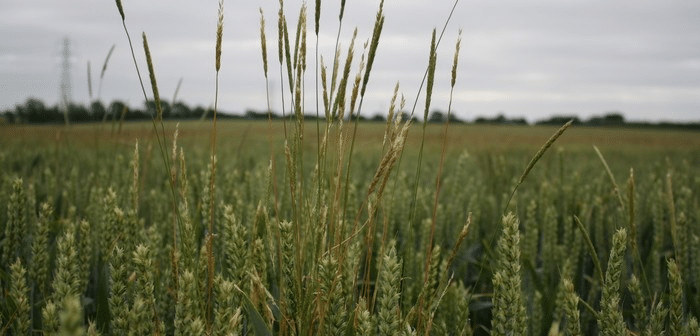Think carefully about your SFI options – The Northern Farmer
Agronomist Alice Cannon talks to Wendy Short about the crop choice for growers who have secured SFI agreements ...
Growers who have secured Sustainable Farming Incentive (SFI) agreements should review their end goals and consider their options with care, as they can have far-reaching effects on issues like soil health and weed control says Farmacy agronomist Alice Cannon.
Some growers who have selected SFI options are now dealing with ‘unintended consequences’ including thistle invasions and increased blackgrass populations, adds Alice.
“Making the correct choice between stacking the multi- species cover crops options or the legume fallow option, for example, will often de- pend on whether the grower is aiming to improve long- term soil health and enhance water management or simply to boost income by taking a higher payment and managing the result.
“There is no one solution – the secret of success is de- pendent on the grower’s own aims and the farm situation,” says Alice.
“Another influential factor is blackgrass control.
“Choosing the incorrect SFI option here could cost the farm greatly in years to come.
“In my opinion, farms with a history of blackgrass problems may benefit in the long term from accepting the low- er payment and increased investment associated with stacking the multi-species cover crop options.
“They allow for blackgrass control, unlike some of the higher paid options such as winter bird food.”
The multi-species cover options come under the headings of SAM2/CSAM2, SOH2 and SOH3 in the SFI scheme, she explains.
“On farms with blackgrass issues the first step would be to sow a winter cover in Au- gust. That would be sprayed off in March, followed by a spring-sown cover crop, which would remain in the ground from March until June.
“The next stage would be the summer-sown cover, lasting from June until August. The total support payment would be £455/ha per year, which can be a step up from spring bean gross margins.”
This regime offers a break in the rotation, as well as three opportunities to bring blackgrass under control, Alice adds. Furthermore, it has the potential to provide a clean and fertile seedbed which would boost first wheat yields.
“Nevertheless, there is no escaping the fact that in financial terms this option generates less income and incurs increased costs compared with the legume fallow option and will not suit a business where finances are the main driver.
“Choosing the correct initial investment in the cover mix is key to the success of this option.
“The scheme requirements can be fulfilled by sowing two species from different families – which could include mustard and oats.
“However, in my view greater advantages can be gained by increasing the species range as their diverse rooting profiles and growth habits produce a much more resilient soil structure.
“Increased species diversity improves aeration and water management, which is becoming increasingly critical. The soil will have greater ability to store water lower down in the profile in times of prolonged drought spells. It will also ensure that moisture is not lost closer to the surface through run-off in high rain- fall situations.
“I would recommend using at least six different plant species that are taken from three or four families.
“It is a more expensive option which will cost roughly £35-£45/ha for the seed, compared with about £20/ha for a two-way mix, but it will reap greater rewards.”
Legume fallow may be an appropriate option for some farms, Alice adds.
Coming under the heading of NUM3/CNUM3, it offers a payment of £593/ha.
“It can come with only one establishment operation, assuming it is kept in the same location and emergence is successful. However, several restrictions will apply, and it may not be suitable on a farm where blackgrass control is a priority.
“NUM3/CNUM3 requires a seed mix containing at least six flowering species, including legumes. Herbicides and fertilisers/manures are prohibited, and it cannot be used for grazing livestock.
“When growing legume fallows in blackgrass situations, it is advisable to sow a mix containing grasses as well as legumes as this will provide. increase competition against blackgrass and therefore aid its control.
“The fields can be mown as required with no restrictions within the first 12 months, as soon as the blackgrass begins to head.
“It is advisable to mow the fallow as lightly as possible. Continuous mowing can lead to the blackgrass growth habit switching to a short profile and becoming more difficult to tackle.
“In year two, the fallows can be mown between March and mid-June, leaving eight weeks uncut in the summer, Alice continues.
“While these management options appear helpful, some growers who have chosen this route in severe blackgrass areas have found that populations have become out of control, leaving them regretting their decisions,” ends Alice.
